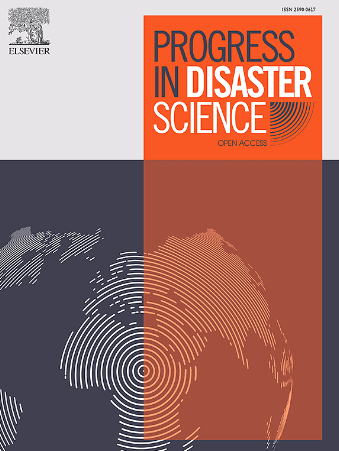通过集成优化和机器学习方法,为医院紧急患者转移的物流提供实时决策支持模型
IF 3.8
Q3 ENVIRONMENTAL SCIENCES
引用次数: 0
摘要
在自然灾害、流行病、大规模工业事故或战争等灾难性事件期间,医院必须不顾重大挑战继续提供不间断的医疗保健服务。然而,他们也可能成为灾难的受害者,并面临撤离的必要性。现有的医院后送模型主要依赖于后送前可获得的基本数据,往往无法考虑紧急情况的动态性,并过度简化了现实世界情况的复杂性。本文标志着向实时、数据驱动的决策支持模型的范式转变,用于管理急性紧急情况下的医院后送。该模型集成了情况严重程度、资源状况、患者需求和道路状况等因素的数据。它采用贝叶斯ARIMA组件来预测患者到达,专门为有限的样本量量身定制。澳大利亚西悉尼Hawkesbury-Nepean河地区的一个假设的洪水紧急情况的案例研究表明,与纯粹基于优化的模型相比,配备预测分析的拟议框架具有优势。数值测试表明,如果没有前瞻性组件来预测未来一段时间的患者转移需求,可能会在初始阶段出现资源分配不当,导致紧急手术后期关键资源短缺。提出的动态决策支持框架强调了预测分析在预测灾害管理和反应的未来趋势方面的潜在价值。这些发现为理解如何利用数据和技术来改善应急响应、促进更具弹性的医疗保健系统提供了潜在的进展。本文章由计算机程序翻译,如有差异,请以英文原文为准。
Real-time decision support model for logistics of emergency patient transfers from hospitals via an integrated optimisation and machine learning approach
During catastrophic events like natural disasters, pandemics, large-scale industrial accidents, or wars, hospitals must continue providing uninterrupted healthcare services despite significant challenges. However, they might also become victims of the disaster and face the necessity of evacuation. Existing hospital evacuation models, which primarily depend on essential data being available before evacuation, often fail to account for the dynamic nature of emergencies and oversimplify the complexities of real-world situations. This paper marks a paradigm shift towards a real-time, data-driven decision-support model for managing hospital evacuations during acute emergencies. The proposed model integrates data on factors such as the severity of the situation, resource status, patient needs, and road conditions. It employs a Bayesian ARIMA component to predict patient arrivals, specially tailored for limited sample sizes. A case study of a hypothetical flood emergency in the Hawkesbury-Nepean Rivers region in Western Sydney, Australia, demonstrates the advantages of a proposed framework equipped with predictive analytics compared to a purely optimization-based model. Numerical testing reveals that without a forward-looking component to predict patient transfer demand over future periods, there can be a misallocation of resources in the initial stages, leading to shortages of critical resources later in the emergency operation. The proposed dynamic decision support framework underlines the potential value of predictive analytics for anticipating future trends in disaster management and response. The findings offer potential advancements in understanding how data and technology can be harnessed to improve emergency responses, promoting more resilient healthcare systems.
求助全文
通过发布文献求助,成功后即可免费获取论文全文。
去求助
来源期刊

Progress in Disaster Science
Social Sciences-Safety Research
CiteScore
14.60
自引率
3.20%
发文量
51
审稿时长
12 weeks
期刊介绍:
Progress in Disaster Science is a Gold Open Access journal focusing on integrating research and policy in disaster research, and publishes original research papers and invited viewpoint articles on disaster risk reduction; response; emergency management and recovery.
A key part of the Journal's Publication output will see key experts invited to assess and comment on the current trends in disaster research, as well as highlight key papers.
 求助内容:
求助内容: 应助结果提醒方式:
应助结果提醒方式:


